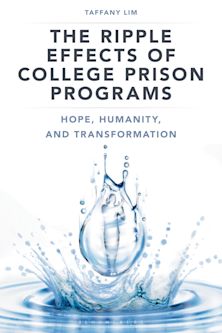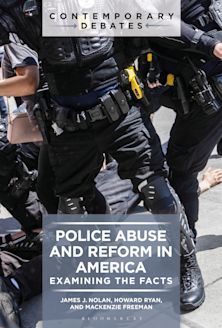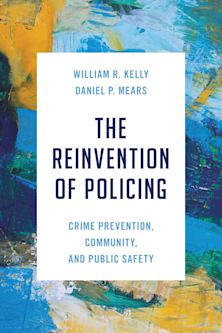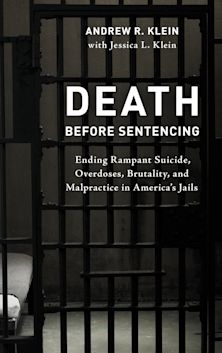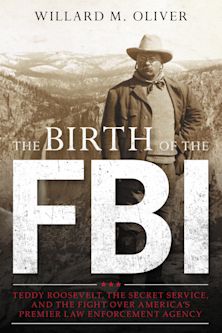Bloomsbury Home
- Home
- ACADEMIC
- Criminology
- Penology, Policing and Crime Prevention
- The Prisoners' World
The Prisoners' World
Portraits of Convicts Caught in the Incarceration Binge
The Prisoners' World
Portraits of Convicts Caught in the Incarceration Binge
For information on how we process your data, read our Privacy Policy
Thank you. We will email you when this book is available to order
You must sign in to add this item to your wishlist. Please sign in or create an account
Description
Drawing on twenty-five years of teaching prison college and volunteer classes in eleven Michigan and California prisons, The Prisoners' World strives to make the "prisoners' voice" come alive for regular college students.
The book starts off by tracing shifts in social definitions of criminality, and lays out the premises of the U.S. incarceration binge in the 1986 War on Drugs laws and subsequent mandatory sentencing and policing. Later chapters discuss issues such as leaving home, cell life, correctional officers and treatment, the homosexual prisoner, and drugs. Furthermore, the book discusses the teachers' experiences via author narrative essays that draw the reader into prisoner student and prisoner teacher interaction, and what it is like inside prison college classes where both young and older black prisoner students describe growing up in the inner cities.
The book also draws upon over sixty prisoner essays that provide insight on prisoner life and self-concept with insights on pathways to prison, drug selling, the inner city and guns. There is also a strong focus on the "inside" experiences of entering prison and orientation, daily work routine, correctional officers and surreptitious activities like cell cooking and contraband. These essays are capped by prisoner critiques of prison life from those still in the system.
The Prisoners' World serves as a successful supplemental book whose material has proven useful in undergraduate criminal justice classes. As college students themselves, on-campus students in these classes will identify with the prisoner-student voices who share their experiences but in a radically different environment.
Table of Contents
Chapter 2 Chapter 1: Historical Periods of Prisoners' Worlds
Chapter 3 Chapter 2: Premises of the Incarceration Binge Culture
Chapter 4 Chapter 3: Binge Growth Theory
Part 5 Part II: Life Before Prison
Chapter 6 Chapter 4: Families and Home
Chapter 7 Chapter 5: Pathways to Prison
Part 8 Part III: Entering the Prisoners' World
Chapter 9 Chapter 6: Getting into "The System"
Chapter 10 Chapter 7: Cells
Chapter 11 Chapter 8: Daily Work Routine
Chapter 12 Chapter 9: Correctional Officers
Part 13 Part IV: Portraits of the Prison Self
Chapter 14 Chapter 10: Prisoner Free Time
Chapter 15 Chapter 11: The Homosexual Prisoner
Chapter 16 Chapter 12: Drugs and Contraband in Prison
Part 17 Part V: African-Americans Caught in the Expanding Prison World
Chapter 18 Chapter 13: Michigan Reformatory (MR)–Young Blacks Caught (1987–1994) in Detroit's Incarceration Binge Drug Sweeps
Chapter 19 Chapter 14: Detroit's Inner City–Critique by Youth (Under 25) Black Prisoners at Michigan Reformatory (MR)
Chapter 20 Chapter 15: Inner City Experiences–Black Prisoners over 25 at Jackson State Prison, 1990–2000
Chapter 21 Chapter 16: Cocaine and Addictive Deadly Crack in Detroit's Inner City
Chapter 22 Chapter 17: Guns in the Inner City
Part 23 Part VI: The Future of the Prisoners' World
Chapter 24 Prisoners' Views on System and Reentry
Chapter 25 The End of the Incarceration Binge
Product details
| Published | 16 Mar 2009 |
|---|---|
| Format | Ebook (PDF) |
| Edition | 1st |
| Extent | 372 |
| ISBN | 9798216346630 |
| Imprint | Lexington Books |
| Series | Issues in Crime and Justice |
| Publisher | Bloomsbury Publishing |
About the contributors
Reviews
-
In sum, students can gain succinct facts on the historical perspective of the incarceration binge and gain a wealth of knowledge about what is happening the contemporary era through The Prisoners' World .
Teaching Sociology
-
William Tregea and Marjorie Larmour, authors of The Prisoner's World, have been teaching college level courses in Michigan prisons for more than twenty-five years, so they're in an outstanding position to observe the boom from inside and hear about its meaning from both prisoners and other correctional workers. The prison-college classroom is a remarkably interesting vantage point....The rich descriptive materials...and the personal narratives in Prisoners' World provide an excellent addition to the highly theoretical and macro-oriented sociology of mass incarceration....A thought-provoking account of the prison world that's been created in the last half century.
Contexts












